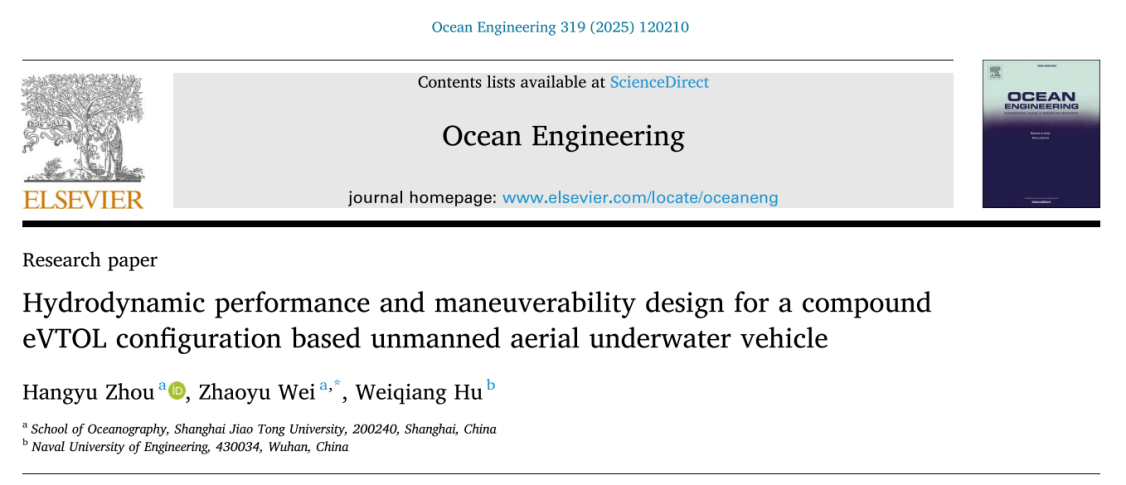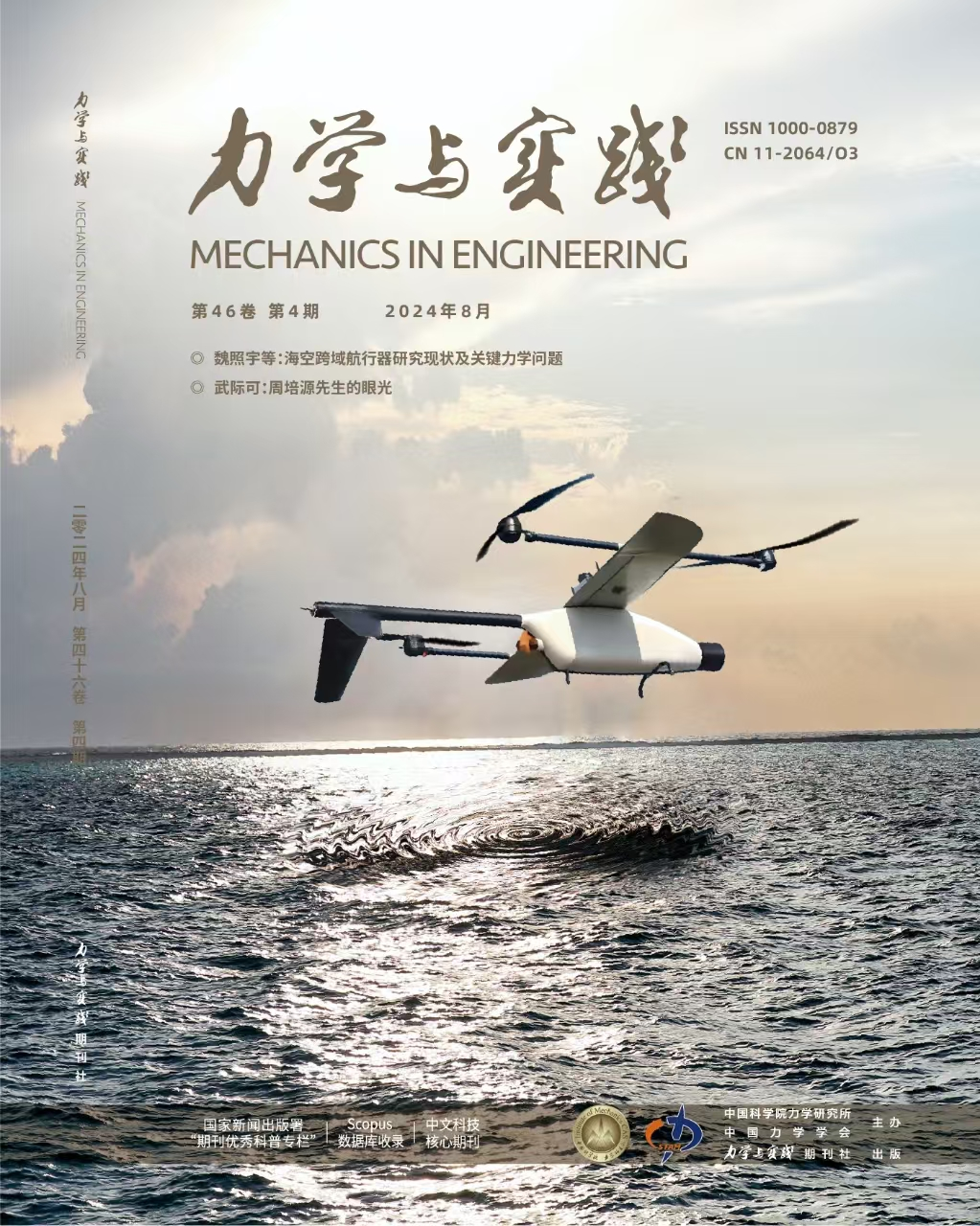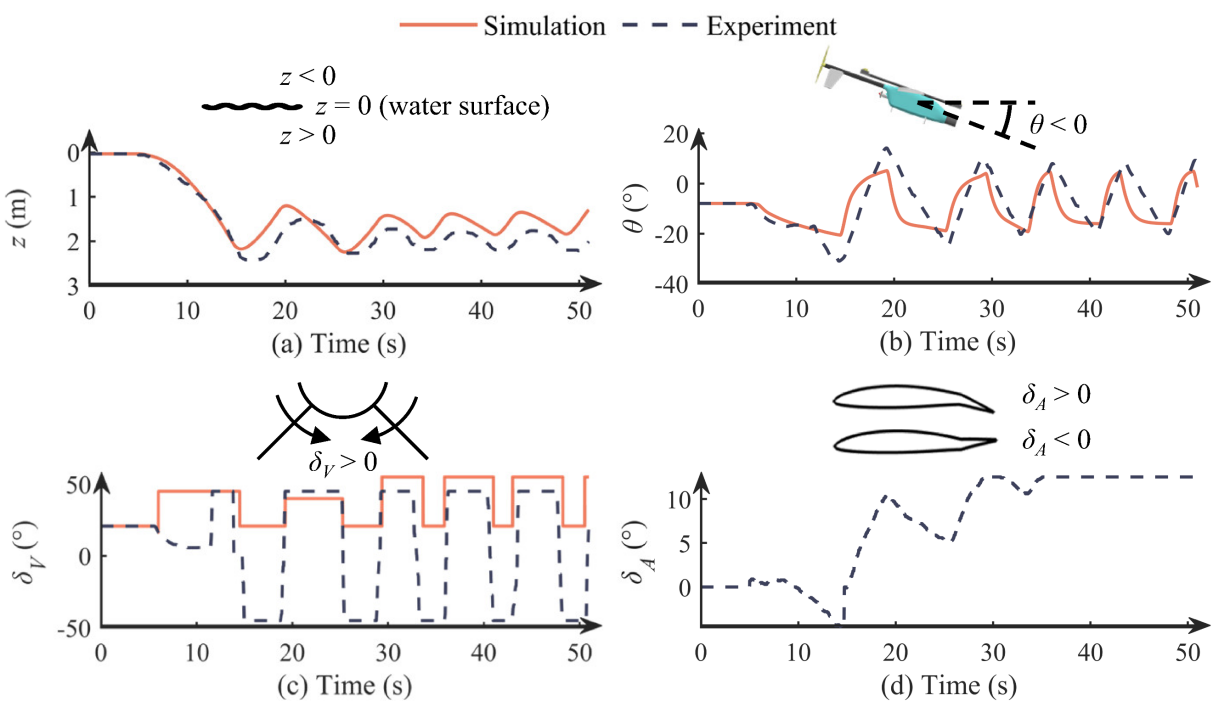Recently, the research Group in the School of Oceanography, Shanghai Jiao Tong University (SJTU-SOO), has developed an unmanned aerial underwater vehicle (UAUV) with a compound eVTOL configuration. This vehicle is capable of travelling in the air and underwater, and vertical takeoff and landing on moving ships. A study titled "Hydrodynamic performance and maneuverability design for a compound eVTOL configuration based unmanned aerial underwater vehicle" has been published in the journal Ocean Engineering. Another study, "Research status and key mechanical issues of unmanned aerial underwater vehicles," was featured as a cover paper in Mechanics in Engineering. The first author of both papers is Hangyu Zhou, a PhD student at SJTU - SOO, and the corresponding author is Associate professor Zhaoyu Wei.
The UAUV with the compound eVTOL configuration offers advantages such as stable water-exit in the vertical altitude and easy take-off on moving ships, which leads it to be a suitable shipborne equipment to explore both sea and air environments. This vehicle emphasizes high-speed flight performance (with a maximum speed of 120 km/h) while also taking into account pressure resistance and hydrodynamic performance. However, this configuration contains complex structures like a fixed wing, multi-rotors, ailerons, and inverted V-rudders, posing unknown and formidable challenges for underwater motion and control. The papers deal with the complex issues of underwater maneuverability and control affected by the coupling of control surfaces in the vehicle. The main factors affecting the stability and maneuverability of the vehicle underwater were analyzed based on hydrodynamic calculations and a dynamic model, including net buoyancy, rudder angle, rudder installation angle, and aileron angle.


The results show that the primary factor influencing the stability of underwater navigation is the aileron angle. The ailerons have a significant and non-monotonic impact on the vehicle's vertical-plane maneuverability, mainly because of the pitch - moment increment caused by aileron deflection. A comparison between the field test results of the vehicle (Figure 1) and the simulation results (Figure 2) further validates the reliability of the model and the rationality of the configuration design. This research paves the way for optimizing the structural design and control systems in the future and will further boost the practical application of such vehicle.

Figure 1. The UAUV is diving from the water surface.

Figure 2. The comparison between the field test results and the simulation results. (a) Depth (b) Pitch angle (c) V-rudder angle (d) Aileron angle.
This research is funded by the National Natural Science Foundation of China (52371327).
Link to the article:
https://doi.org/10.1016/j.oceaneng.2024.120210
http://dx.doi.org/10.6052/1000-0879-23-299
Contributed by Research Group of Zhaoyu Wei
